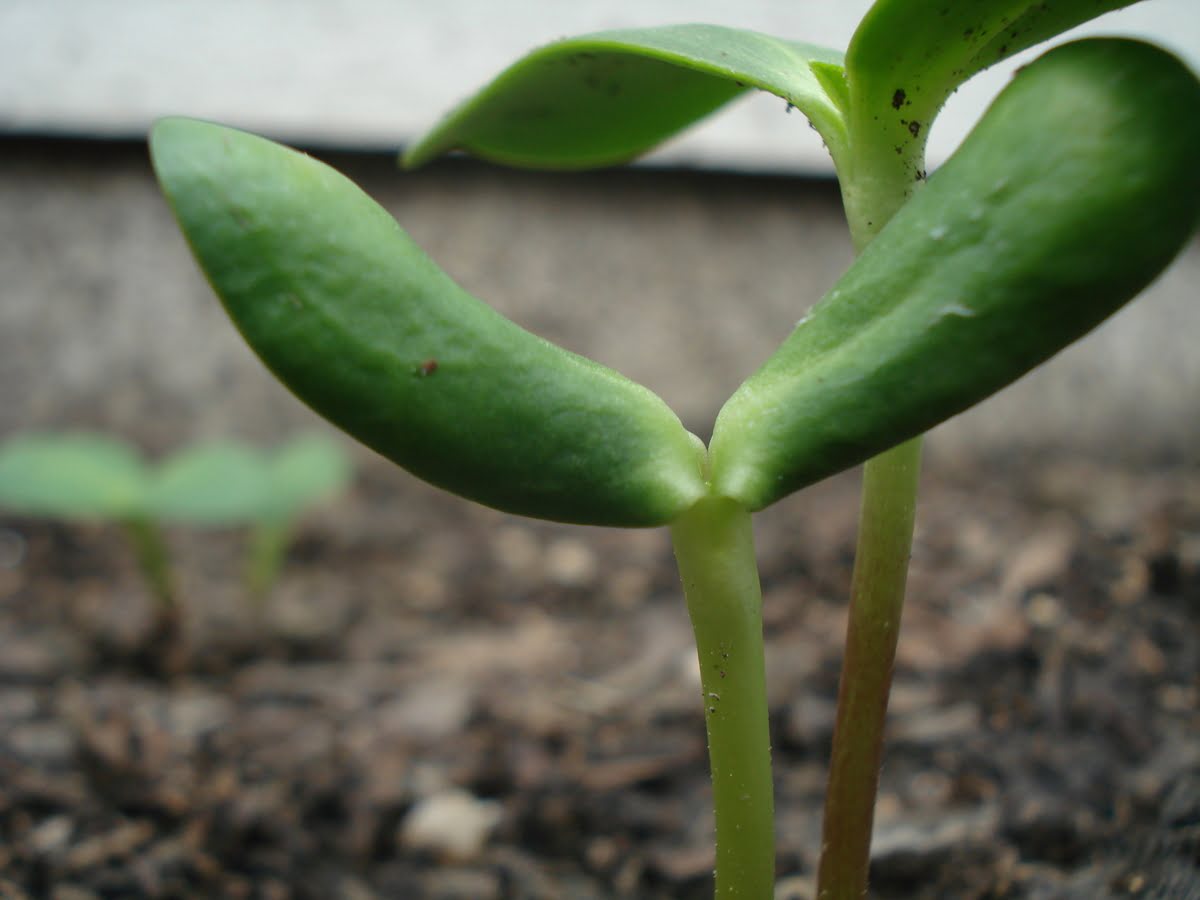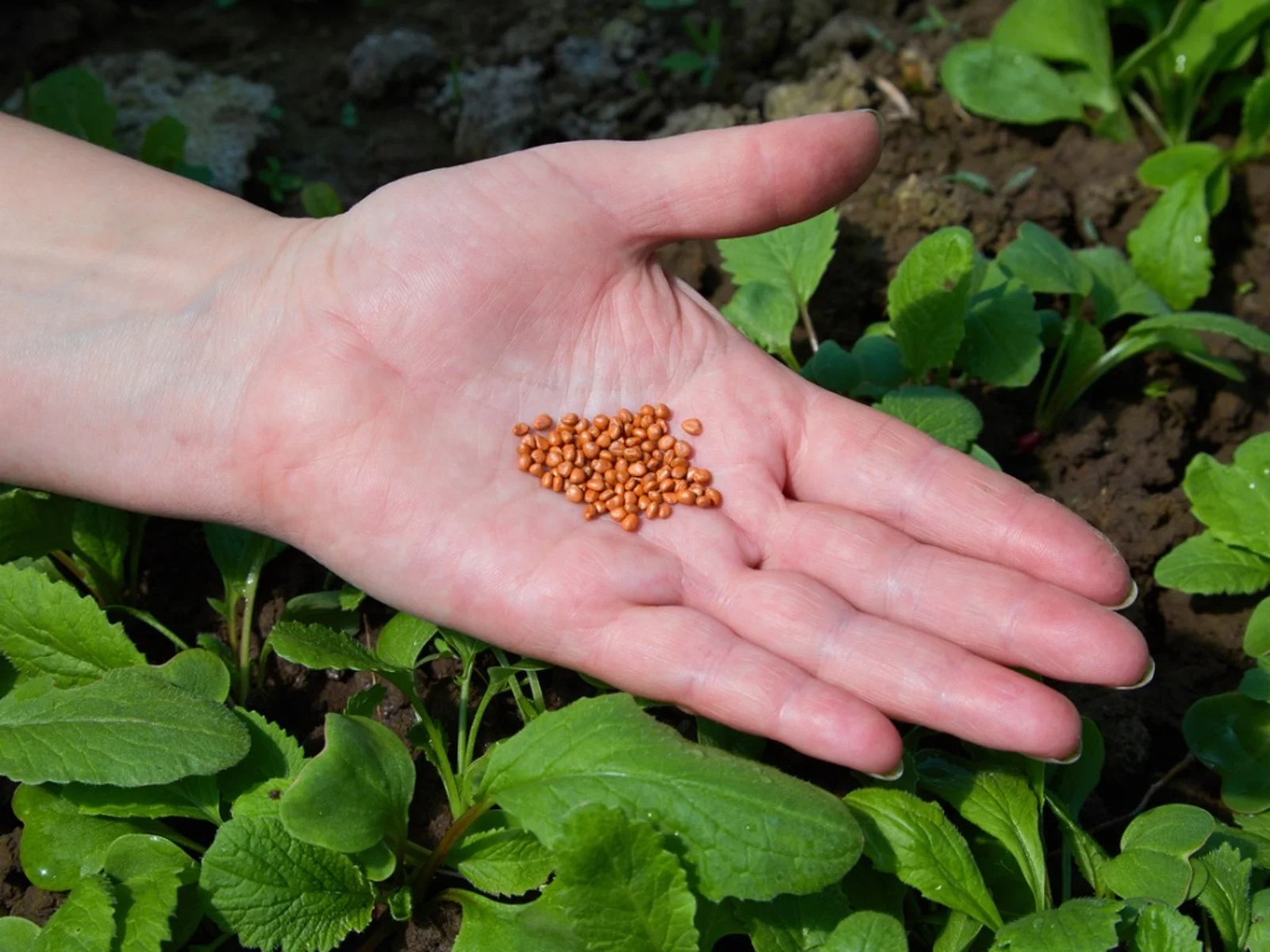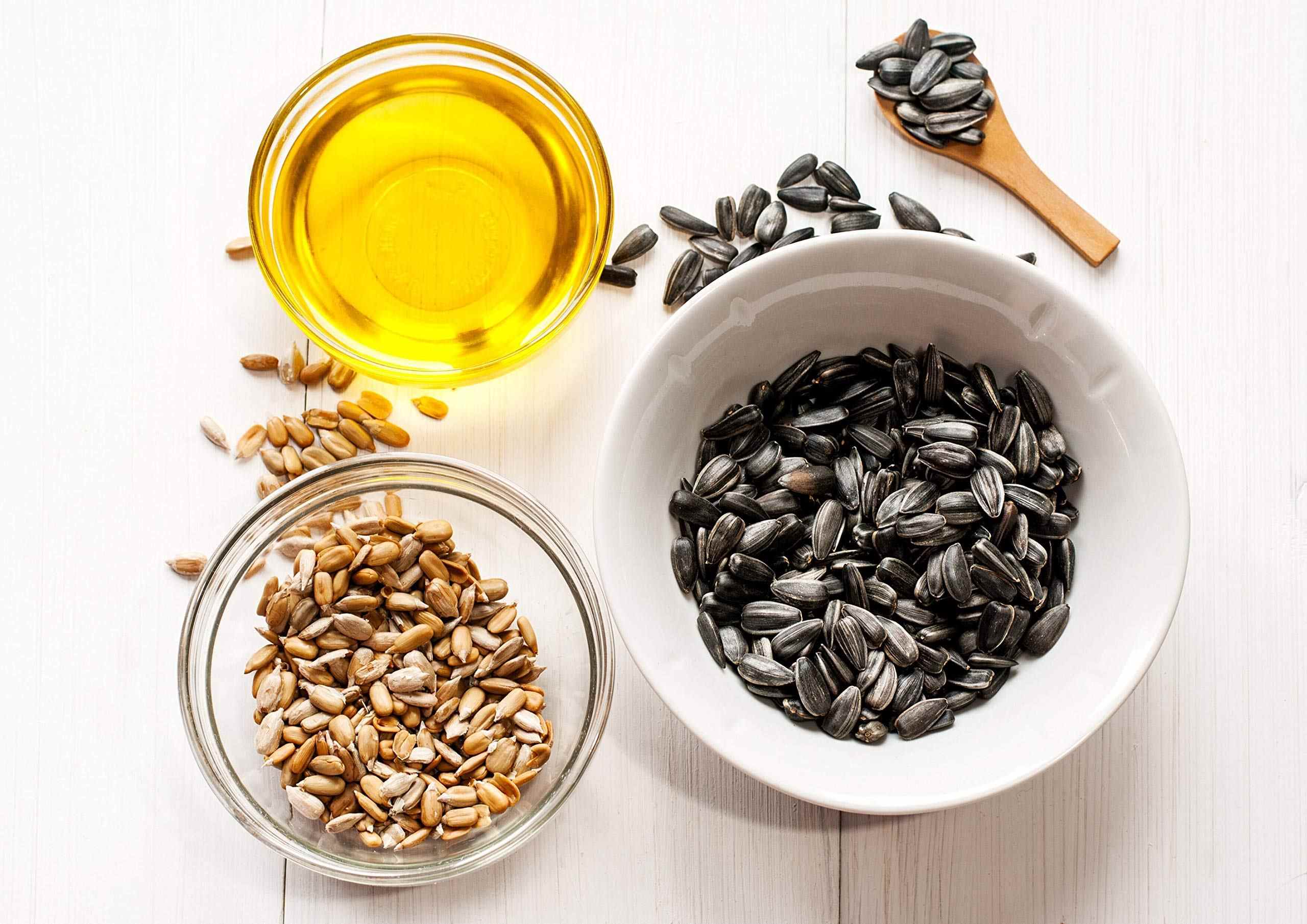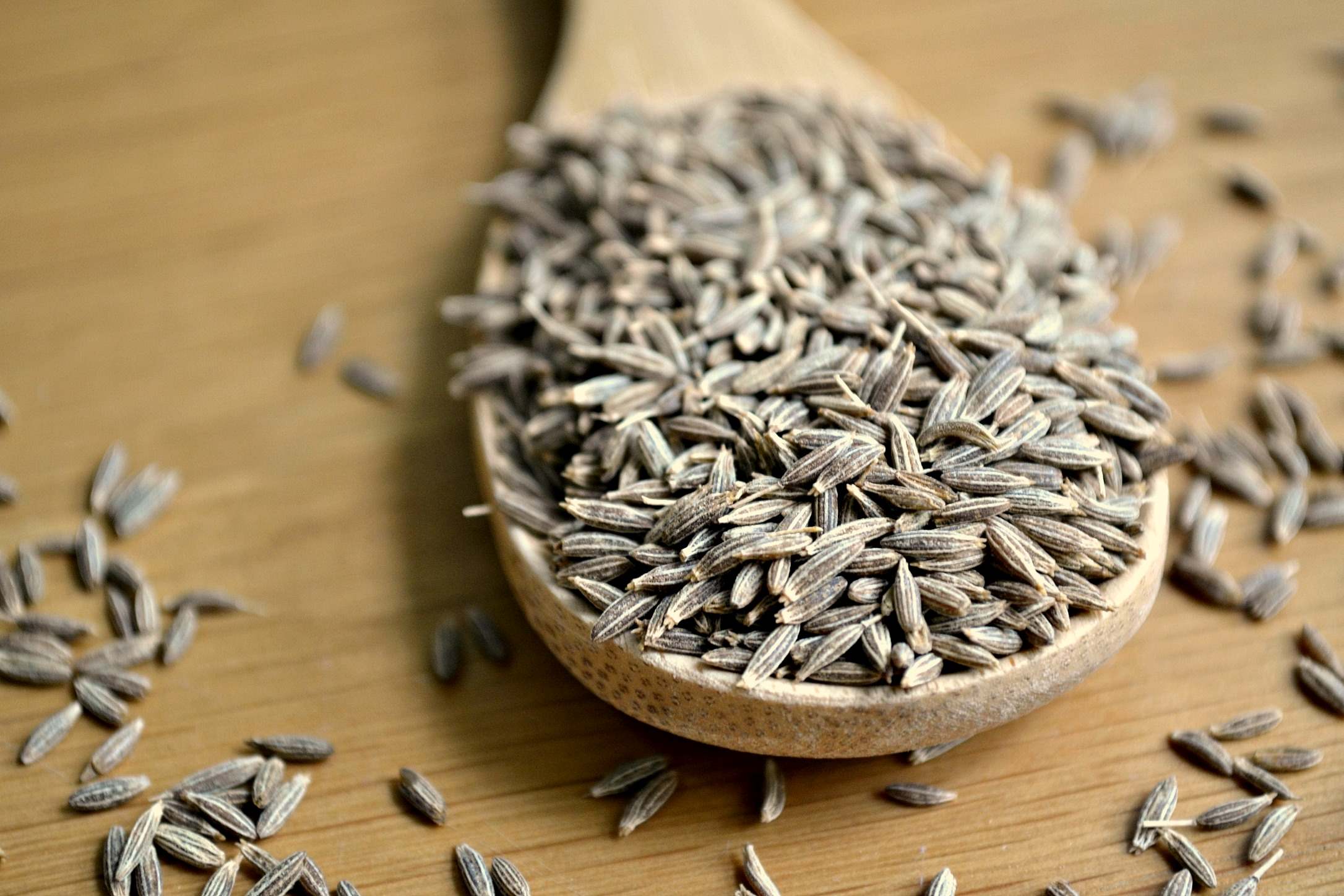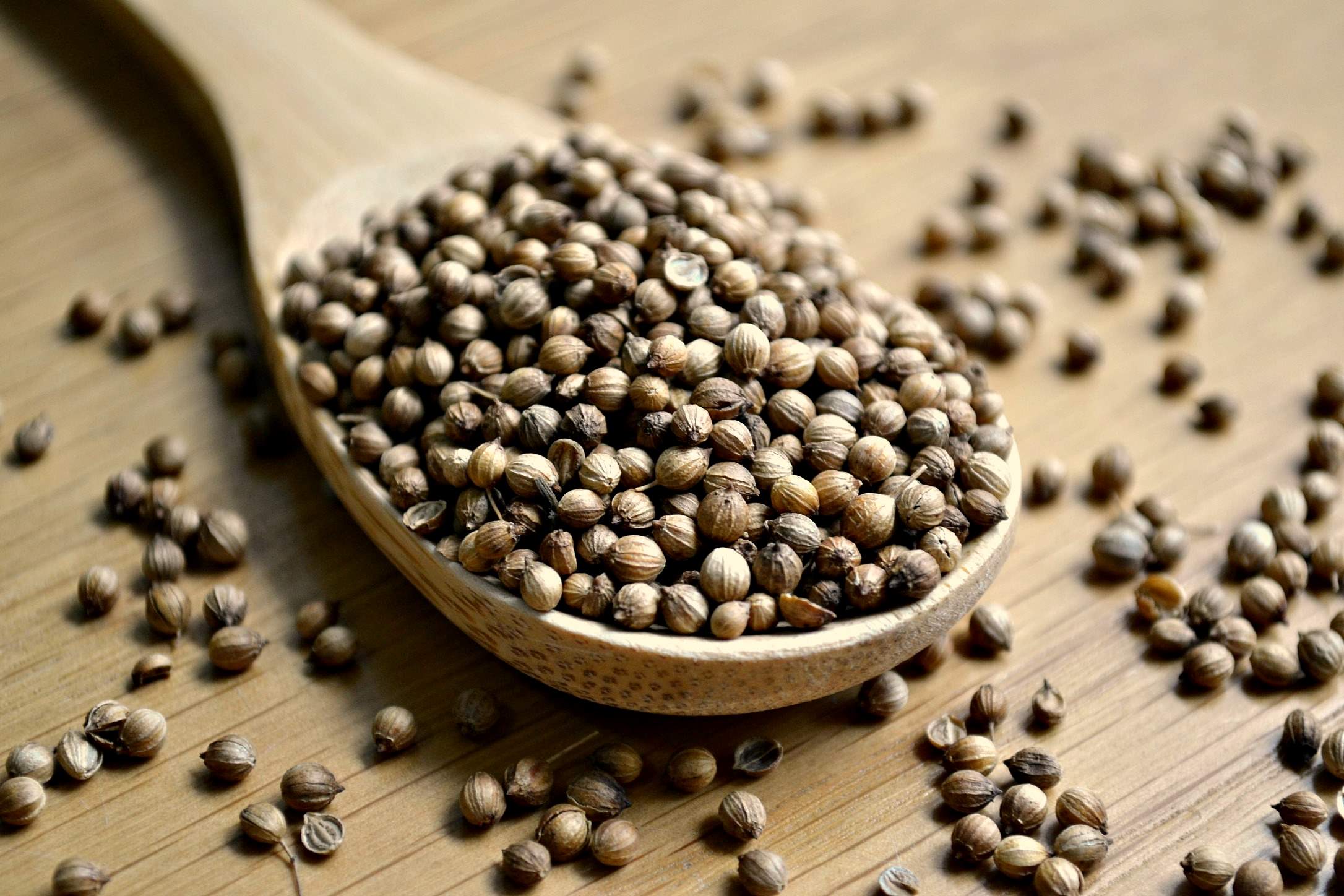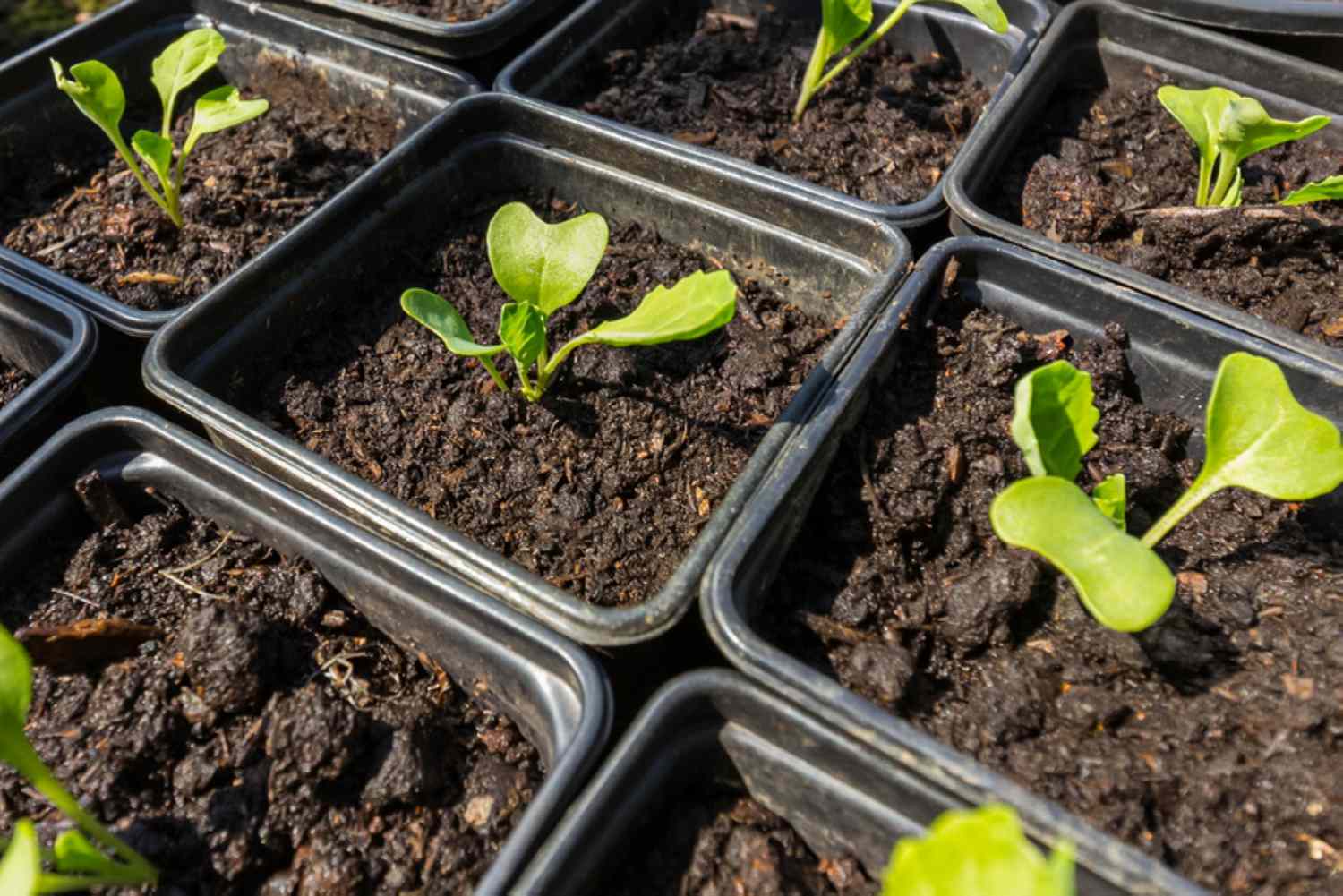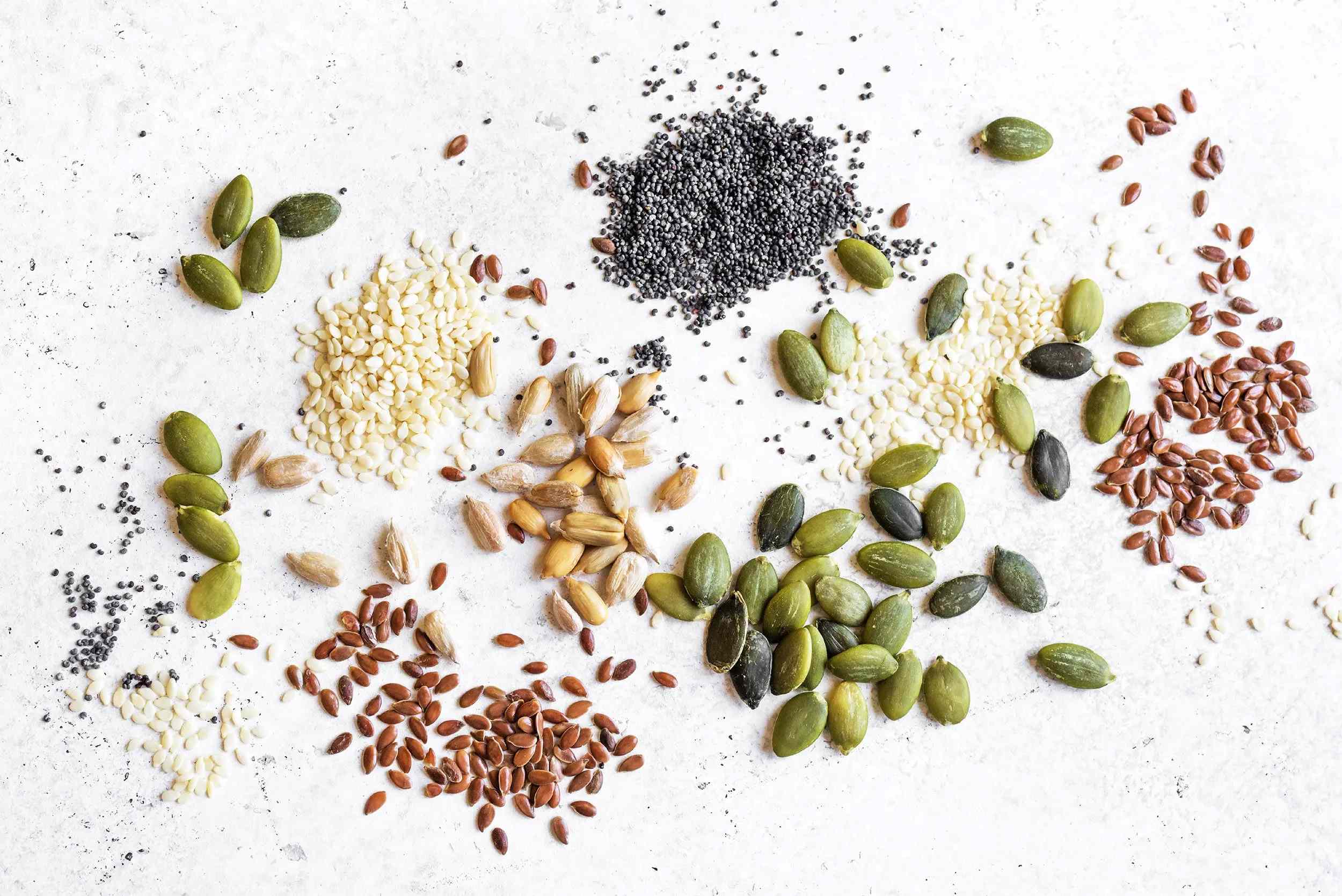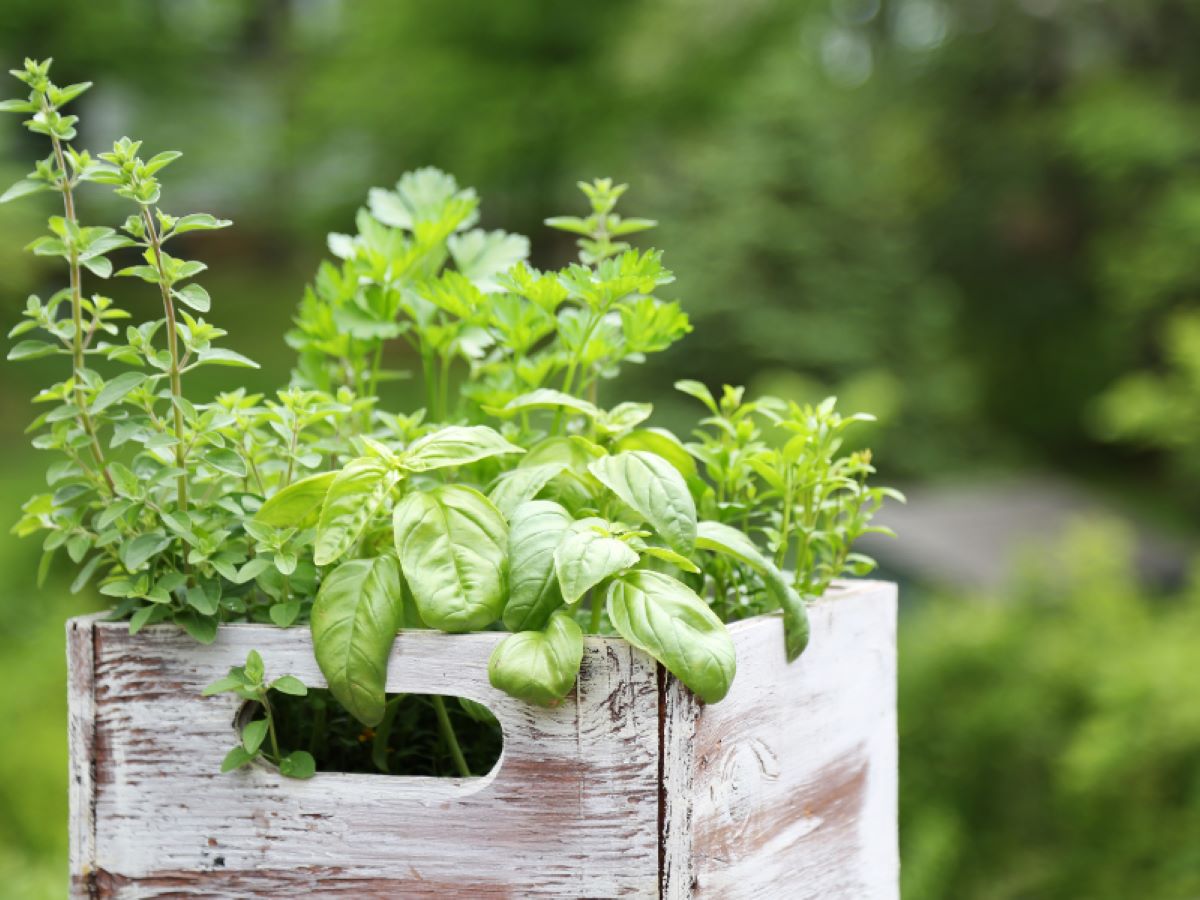Home>Types of Gardening>Edible Gardening>What Are Sprouting Seeds
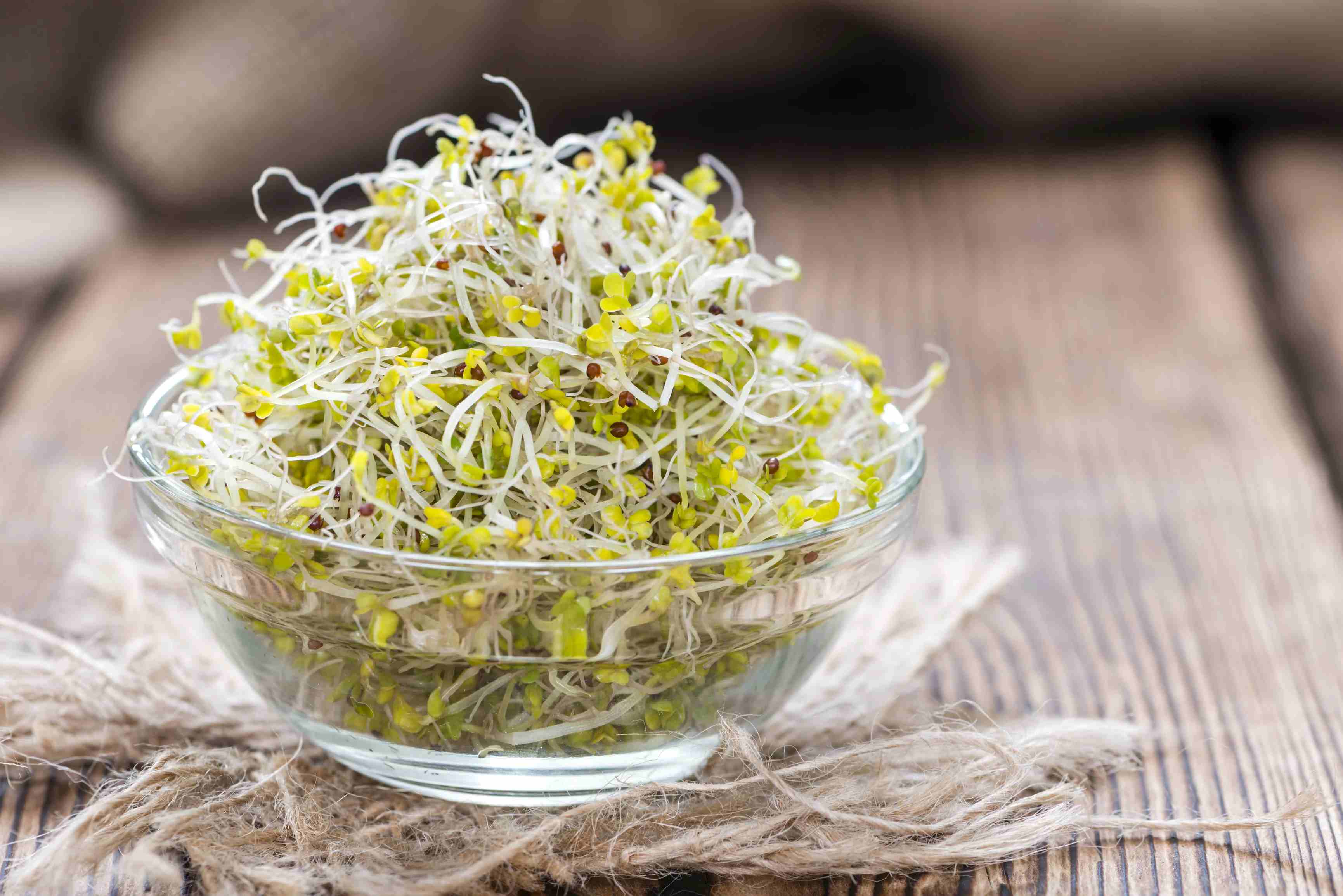

Edible Gardening
What Are Sprouting Seeds
Published: September 21, 2023
Discover the benefits of sprouting seeds in your edible gardening journey. Learn how to easily grow nutritious sprouts at home and unlock their endless culinary possibilities.
(Many of the links in this article redirect to a specific reviewed product. Your purchase of these products through affiliate links helps to generate commission for Chicagolandgardening.com, at no extra cost. Learn more)
Table of Contents
- Introduction
- Definition of Sprouting Seeds
- Benefits of Sprouting Seeds
- How to Sprout Seeds at Home
- Popular Types of Sprouting Seeds
- Nutritional Value of Sprouting Seeds
- Sprouting Seeds and Health
- Tips for Successful Sprouting
- Common Issues in Sprouting Seeds and How to Solve Them
- Culinary Uses of Sprouting Seeds
- Conclusion
Introduction
Welcome to the wonderful world of edible gardening! Imagine stepping outside your door and plucking fresh, vibrant vegetables and herbs straight from your own garden. Edible gardening allows you to connect with nature, save money, and experience the pure joy of harvest. One of the fascinating aspects of edible gardening is the process of growing and nurturing plants from sprouting seeds.
Sprouting seeds are simply seeds that have started to germinate and grow into small, edible plants. This magical transformation from a tiny seed to a flourishing sprout is not only visually appealing but also packed with numerous health benefits. By sprouting seeds at home, you can enjoy a constant supply of nutrient-rich, flavorful ingredients right at your fingertips.
Definition of Sprouting Seeds:
Sprouting seeds are essentially seeds that have been soaked in water and allowed to germinate. This process triggers the seeds to release enzymes, which break down complex nutrients into simpler forms that are easier for the human body to digest and absorb. As the seeds germinate, they develop tiny shoots and roots, which are the edible part of the plant.
Benefits of Sprouting Seeds:
Sprouting seeds offer a plethora of benefits that make them a valuable addition to any edible garden or kitchen. Firstly, sprouts are incredibly nutritious, containing a wide range of vitamins, minerals, enzymes, and antioxidants. They are also low in calories, making them an excellent option for those watching their weight. Additionally, sprouting seeds can increase the availability of certain nutrients, such as vitamin C, iron, and calcium. These nutrients are often more concentrated in sprouts than in mature plants.
Furthermore, sprouting seeds can enhance digestion and gut health. The germination process activates enzymes that aid in the breakdown of proteins, fats, and carbohydrates, making the nutrients more bioavailable and easier to digest. This can be particularly beneficial for individuals with digestive issues or nutrient deficiencies.
Definition of Sprouting Seeds
Sprouting seeds are an essential component of the edible gardening journey, as they offer the opportunity to witness the miraculous transformation of a dormant seed into a vibrant, edible plant. But what exactly are sprouting seeds?
Simply put, sprouting seeds are seeds that have begun the process of germination. When a seed is exposed to optimal conditions of moisture, warmth, and oxygen, it “wakes up” and starts to sprout. This process involves the activation of enzymes within the seed, which break down the starches and proteins, making them more readily available for growth.
During the germination process, the outer protective coating of the seed softens, and a tiny root emerges, followed by a shoot that eventually develops into the plant. This is the stage at which the sprouting seeds are typically harvested and consumed.
It is important to note that not all seeds are suitable for sprouting. Some seeds, like those of nightshade plants (such as tomatoes and peppers), contain compounds that can be toxic when consumed in large quantities. However, many common seeds are excellent candidates for sprouting, including legumes, grains, and certain leafy greens.
One of the key factors that sets sprouting seeds apart from traditional seeds is their higher nutritional value. As the seeds begin to sprout, they undergo biochemical changes that increase their nutrient content. Sprouts are packed with essential vitamins, minerals, and enzymes, making them a highly nutritious addition to any diet.
Sprouting seeds can be a fun and rewarding activity for gardeners of all levels. Whether you have a dedicated sprouting kit or simply a jar and a piece of cheesecloth, you can experience the joy of watching your sprouting seeds come to life. With a little care and attention, you can transform these tiny seeds into a bountiful harvest of fresh and nutrient-rich sprouts.
Benefits of Sprouting Seeds
The process of sprouting seeds not only adds a delightful touch to your edible gardening journey but also brings along a multitude of health benefits. Let’s explore some of the advantages of incorporating sprouting seeds into your diet.
1. Nutritional Powerhouses: Sprouts are nutritional powerhouses, packed with essential vitamins, minerals, and antioxidants. During the sprouting process, the concentration of nutrients significantly increases, making sprouts a nutrient-dense addition to your meals. They are particularly rich in vitamins A, C, and K, as well as folate, iron, and fiber.
2. Improved Digestion: Sprouting seeds contain enzymes that aid in the digestion of complex starches, proteins, and fats. These enzymes break down the complex nutrients into simpler forms that are easier for the body to digest and absorb. This can help alleviate digestive strain and promote better nutrient absorption.
3. Increased Bioavailability: The germination process enhances the bioavailability of certain nutrients, making them easier for the body to utilize. For example, sprouted seeds can increase the availability of vitamin C, which is often limited in other food sources. This means that your body can better absorb and benefit from the nutrients present in sprouts.
4. Weight Management: If you are looking to manage your weight, sprouting seeds can be a beneficial addition to your diet. Sprouts are low in calories and fat while being high in fiber and water content. This combination can help you feel full and satisfied, reducing the likelihood of overeating.
5. Enhanced Antioxidant Activity: Sprouts are known to possess higher levels of antioxidants compared to their mature counterparts. Antioxidants help neutralize free radicals in the body, protecting cells from oxidative damage and reducing the risk of chronic diseases.
6. Cost-Effective: Growing your own sprouts at home is easy and cost-effective. A small amount of sprouting seeds can yield a significant amount of sprouts, providing you with a constant supply of fresh and nutritious ingredients without breaking the bank.
7. Versatile Culinary Uses: Sprouts add a delightful crunch and freshness to a variety of dishes. They can be used in salads, sandwiches, stir-fries, wraps, and even as a topping for soups and bowls. Their mild flavor allows them to complement a wide range of flavors, making them a versatile ingredient in the kitchen.
By incorporating sprouting seeds into your diet, you can enjoy a myriad of health benefits and elevate the nutritional content of your meals. Whether you are looking to boost your nutrient intake, improve digestion, or simply add a burst of freshness to your dishes, sprouts are a fantastic addition to any healthy eating plan.
How to Sprout Seeds at Home
Sprouting seeds at home is a straightforward and rewarding process that allows you to enjoy fresh, nutrient-rich sprouts right from your own kitchen. Here is a step-by-step guide on how to sprout seeds:
1. Choose Your Seeds: Start by selecting the type of seeds you want to sprout. Popular choices include alfalfa, broccoli, mung beans, lentils, and radish seeds. Ensure that you purchase high-quality, organic, and untreated seeds for optimal results.
2. Rinse the Seeds: Measure out the desired amount of seeds and place them in a fine-mesh sieve or sprouting jar. Rinse the seeds thoroughly under running water to remove any dirt or debris.
3. Soak the Seeds: Transfer the rinsed seeds to a clean bowl or sprouting jar and add water. The water level should be around two to three times the depth of the seeds. Allow the seeds to soak for the recommended time, which can vary depending on the type of seeds (usually between 4 to 12 hours).
4. Drain and Rinse: After the soaking period, drain the water from the seeds using a sieve or by tilting the sprouting jar. Rinse the seeds thoroughly with fresh water to remove any residue.
5. Choose the Sprouting Method: There are various methods you can choose from to sprout your seeds. Some popular options include using a sprouting jar with a mesh lid, a tray sprouter, or a simple bowl with a damp cheesecloth covering.
6. Sprout the Seeds: Place the drained seeds in your chosen sprouting container. Follow the specific instructions for your method of choice. Generally, you’ll need to keep the seeds moist by rinsing them with fresh water once or twice a day. Ensure proper ventilation to prevent mildew or mold growth. Position the sprouting container in a warm area away from direct sunlight.
7. Watch for Growth: Over the next few days, you’ll start to notice tiny shoots emerging from the seeds. Continue to rinse and drain the sprouts as needed. The sprouting time can vary depending on the type of seeds and environmental conditions. Typically, sprouts are ready to harvest within 3 to 7 days.
8. Harvest and Storage: Once the sprouts have reached your desired length, gently remove them from the sprouting container and rinse them one final time. Allow them to drain thoroughly before storing them in an airtight container or a plastic bag lined with paper towels. Store the sprouts in the refrigerator, where they will stay fresh for up to 7 days.
Enjoy your homegrown sprouts in salads, sandwiches, wraps, or as a colorful garnish on various dishes. Experiment with different seed varieties to discover your favorites and to add a delightful crunch and freshness to your meals.
Popular Types of Sprouting Seeds
When it comes to sprouting seeds, there is a diverse selection to choose from. Each type of seed brings its unique flavor, texture, and nutritional profile to your sprouting adventures. Let’s explore some of the popular types of sprouting seeds:
1. Alfalfa: Alfalfa sprouts are mild, crisp, and slightly sweet. They are rich in vitamins A, C, and K, as well as minerals like calcium and iron. Alfalfa sprouts are commonly used in salads, sandwiches, and wraps.
2. Broccoli: Broccoli sprouts have a slightly spicy and tangy flavor, reminiscent of the mature vegetable. They are packed with nutrients like antioxidants, vitamins A and C, and sulforaphane, a compound known for its potential health benefits.
3. Mung Beans: Mung bean sprouts are one of the most widely consumed sprouts and are commonly used in Asian cuisine. They have a crunchy texture and a mild, nutty flavor. Mung bean sprouts are an excellent source of fiber, vitamins C and K, and minerals like potassium and magnesium.
4. Lentils: Lentil sprouts have a tender texture and a slightly peppery taste. They are rich in protein, fiber, folate, and iron. Lentil sprouts can be enjoyed in salads, soups, stir-fries, and as a filling in wraps.
5. Radish: Radish sprouts have a peppery and slightly spicy flavor that adds a zing to any dish. They are a good source of vitamin C, antioxidants, and minerals like calcium and potassium. Radish sprouts are commonly used in salads, sandwiches, and as a topping for soups.
6. Sunflower: Sunflower sprouts have a nutty and slightly earthy flavor. They are known for their high content of vitamin E, which is a powerful antioxidant. Sunflower sprouts make a great addition to salads, sandwiches, and smoothies.
7. Wheatgrass: Wheatgrass is a popular type of sprout that is typically juiced or used in powdered form. It is rich in chlorophyll, vitamins A, C, and E, and minerals like iron and magnesium. Wheatgrass is known for its potential detoxifying and energizing properties.
These are just a few examples of the wide variety of sprouting seeds available. Other popular options include clover, mustard, fenugreek, and chia seeds. Each type of sprouting seed brings its unique flavor and nutritional benefits to your meals, allowing you to explore different tastes and textures while reaping the health rewards.
Nutritional Value of Sprouting Seeds
Sprouting seeds not only add a delightful crunch and freshness to your meals but also offer an impressive nutritional profile. The sprouting process enhances the nutrient content of seeds, making sprouts a powerhouse of essential vitamins, minerals, enzymes, and antioxidants. Let’s explore the nutritional value of sprouting seeds:
Vitamins: Sprouting seeds are a rich source of vitamins, including vitamin A, vitamin C, vitamin K, and various B vitamins. These vitamins play critical roles in supporting overall health, boosting the immune system, promoting healthy skin, and aiding in proper cellular function.
Minerals: Sprouts contain an array of minerals, such as iron, calcium, potassium, and magnesium. These minerals are essential for maintaining healthy bones, supporting muscle function, regulating blood pressure, and facilitating various biochemical processes in the body.
Enzymes: Sprouts are abundant in enzymes, which are crucial for digestion and nutrient absorption. Enzymes help break down proteins, carbohydrates, and fats, making them easier for the body to digest and utilize. This can enhance overall digestion and help alleviate digestive issues.
Antioxidants: Sprouting stimulates the production of antioxidants in seeds, which protect cells from oxidative damage caused by free radicals. Antioxidants help reduce the risk of chronic diseases, support optimal immune function, and promote healthy aging.
Enriched Nutrient Content: The sprouting process results in increased nutrient availability and concentration. For example, sprouted seeds can have higher levels of certain nutrients like vitamin C, iron, and calcium compared to their unsprouted counterparts. Sprouts are also rich in phytochemicals, plant compounds with potential health benefits.
Fiber: Sprouts are a good source of dietary fiber, which is essential for a healthy digestive system. Fiber promotes regular bowel movements, helps control blood sugar levels, and supports heart health.
It’s important to note that the nutrient composition of sprouting seeds can vary depending on the specific type of seeds. Different seeds offer different nutritional profiles, so incorporating a variety of sprouts into your diet can maximize your nutrient intake.
As you embark on your sprouting journey, keep in mind that proper handling, storage, and cleanliness are vital to prevent microbial contamination. It is recommended to use high-quality, organic seeds and ensure that your sprouting equipment is clean and sterile.
By incorporating sprouting seeds into your diet, you can enjoy a nutrient-dense addition to your meals, boosting your overall health and well-being.
Sprouting Seeds and Health
Sprouting seeds offer numerous health benefits, making them a valuable addition to a well-rounded diet. Let’s delve into how sprouting seeds can positively impact your health:
1. Enhanced Nutrient Absorption: Sprouted seeds are easier for the body to digest and absorb due to the activation of enzymes during the sprouting process. This increased bioavailability of nutrients ensures that your body can make the most out of the vitamins, minerals, and other essential compounds present in sprouts.
2. Improved Digestion: The enzymes present in sprouts aid in the digestion of proteins, fats, and carbohydrates, promoting efficient nutrient breakdown and absorption. This can help alleviate digestive issues such as bloating, gas, and indigestion.
3. Gut Health: Sprouts are a great source of dietary fiber, which plays a crucial role in maintaining a healthy gut. Fiber acts as a prebiotic, feeding the beneficial bacteria in your gut and promoting a balanced and thriving gut microbiome. A healthy gut microbiome is associated with various health benefits, including improved digestion, stronger immune function, and better mental health.
4. Antioxidant Protection: Sprouts are rich in antioxidants, which help protect against cellular damage caused by free radicals. Antioxidants can reduce the risk of chronic diseases, such as heart disease, cancer, and neurodegenerative disorders, and support overall well-being.
5. Weight Management: Including sprouts in your diet can aid in maintaining a healthy weight. Sprouts are low in calories and fat but high in fiber, helping you feel fuller for longer and reducing the likelihood of overeating. Additionally, their nutrient density ensures that you receive essential nutrients without excessive calories.
6. Blood Sugar Control: The high fiber content of sprouts can help regulate blood sugar levels by slowing down the absorption of sugars into the bloodstream. This can be particularly beneficial for individuals with diabetes or those at risk of developing the condition.
7. Heart Health: Sprouts offer heart-healthy nutrients such as potassium, magnesium, and fiber. These nutrients can help lower blood pressure, reduce LDL cholesterol levels, and support overall cardiovascular health.
8. Immune System Support: The abundance of vitamins and minerals in sprouting seeds helps strengthen the immune system, making it more effective in fighting off infections and maintaining optimal health.
It’s important to note that sprouts, like any fresh produce, can be susceptible to bacterial contamination, so it is crucial to practice proper hygiene and handle and store sprouts safely to minimize the risk of foodborne illnesses.
Incorporating sprouting seeds into your diet can be an excellent way to boost your overall health and well-being. Enjoy the nutritional benefits and discover the incredible flavors and textures that sprouts bring to your meals.
Tips for Successful Sprouting
Sprouting seeds can be a rewarding and enjoyable process, but it does require attention to detail to achieve successful results. Here are some helpful tips to ensure your sprouting endeavors are successful:
1. Start with High-Quality Seeds: Choose fresh, organic, and untreated seeds from a reputable source. High-quality seeds will have a higher germination rate and produce healthier sprouts.
2. Cleanliness is Key: Use clean equipment and wash your hands thoroughly before handling the seeds. This helps prevent the growth of harmful bacteria and ensures the best conditions for sprouting.
3. Soak Time: Follow the recommended soaking time for each type of seed. Different seeds require different soaking durations to achieve optimal sprouting. Avoid over-soaking, as it can lead to mold or mushy sprouts.
4. Rinse and Drain: Rinse the sprouting seeds with fresh water two or three times a day to keep them moist and to wash away any residue. Ensure proper drainage after each rinse to prevent waterlogged sprouts.
5. Ventilation: Proper airflow is crucial to prevent mold growth. Ensure that your sprouting container has good ventilation and is not kept in airtight conditions.
6. Temperature and Lighting: Find a warm spot in your home away from direct sunlight for optimal sprouting conditions. Most sprouting seeds prefer temperatures between 65°F and 75°F (18°C – 24°C).
7. Manage Humidity: Maintain the right level of humidity in your sprouting environment. Excess moisture can lead to mold growth, while low humidity can cause the sprouts to dry out. Adjust as needed based on the specific requirements of the seeds you are sprouting.
8. Harvest at the Right Time: Monitor the growth of your sprouts and harvest them at the desired stage. Sprouts are typically ready to harvest when they have developed small leaves or when their roots have reached a length of 1-2 inches.
9. Storage: Once harvested, rinse and drain your sprouts thoroughly before storing them in a clean, airtight container lined with paper towels. Refrigerate them to maintain freshness and extend their shelf life.
10. Experiment and Have Fun: Don’t be afraid to try different types of seeds and sprouting methods. Enjoy the process of discovering new flavors and textures and finding what works best for you.
By following these tips, you can increase your chances of successful sprouting and enjoy a constant supply of fresh and nutritious sprouts at home. Happy sprouting!
Common Issues in Sprouting Seeds and How to Solve Them
Sprouting seeds can sometimes present challenges along the way, but with the right knowledge and troubleshooting, you can overcome these common issues. Here are some common problems that may arise while sprouting seeds and suggestions on how to solve them:
1. Mold or Fungal Growth: Excessive moisture and poor ventilation can lead to mold or fungal growth on your sprouts. To prevent this, ensure proper drainage, maintain good airflow, and rinse the seeds thoroughly during each rinsing cycle. If you notice mold, discard the affected sprouts and adjust the conditions to be less favorable for mold growth.
2. Foul Odor: A foul odor often indicates decay or bacterial growth. This can occur if the sprouts are kept too wet or in a warm and humid environment. Adjust your sprouting conditions by reducing moisture, increasing airflow, and rinsing the sprouts more frequently. If the odor persists, it is best to discard the sprouts and start fresh with new seeds.
3. Seed Rot: Seed rot can occur if the seeds are old or if they become waterlogged. Use fresh and high-quality seeds, and avoid over-soaking or keeping the seeds in standing water. Instead, ensure thorough drainage after each rinse to prevent seed rot.
4. Insufficient Sprouting: If your sprouts aren’t growing as expected, several factors could be at play. Check the temperature and make sure it falls within the suitable range for the specific seeds you are sprouting. Ensure proper hydration by rinsing the seeds adequately, and verify that the seeds are fresh and viable. Adjusting these factors should encourage proper sprouting.
5. Uneven Sprouting: Some sprouts may germinate faster than others, leading to uneven growth. To promote more consistent sprouting, soak the seeds for an equal amount of time, distribute them evenly in your sprouting container, and rinse them thoroughly during each rinsing cycle. This will provide a more uniform environment for all the seeds.
6. Pest Infestation: Occasionally, insects or pests may be attracted to sprouting seeds. To deter pests, maintain cleanliness by regularly rinsing and draining the seeds, and store your sprouting setup in a clean environment. You can also consider using a fine mesh or cheesecloth to cover your sprouting container to prevent pests from accessing the seeds.
7. Slow Sprouting: If your seeds are taking longer than expected to sprout, assess the environmental conditions. Ensure that the temperature is within the optimal range for the specific seeds, and verify that the seeds are fresh and viable. Additionally, increasing the frequency of rinsing or adjusting the humidity levels can help stimulate sprouting.
By addressing these common issues, you can overcome obstacles that may arise during the sprouting process and enjoy a successful harvest of fresh and healthy sprouts. Remember, proper maintenance, cleanliness, and adapting conditions to suit the specific needs of your sprouting seeds are key to achieving successful sprouting results.
Culinary Uses of Sprouting Seeds
Sprouting seeds aren’t just nutritious and easy to grow, but they also add a delightful texture and flavor to a variety of dishes. Let’s explore the culinary uses of sprouting seeds and how you can incorporate them into your meals:
1. Salads: Sprouts are a fantastic addition to salads. Their crisp texture and fresh taste bring a vibrant and nutrient-packed element to your salad bowl. Mix them with other leafy greens, vegetables, and dressings for an extra boost of flavor and nutrition.
2. Sandwiches and Wraps: Add a crunchy and nutritious element to your sandwiches and wraps by layering in some sprouts. They provide a refreshing contrast to other ingredients and make your sandwiches more satisfying and wholesome.
3. Stir-Fries and Sautes: Tossing sprouts into stir-fries and sautes during the last few minutes of cooking can add a burst of color, texture, and flavor to the dish. Their crispness holds up well during cooking, and they provide a delightful bite amidst other cooked ingredients.
4. Smoothie Bowls: Top off your smoothie bowls with a handful of sprouts for an unexpected twist. Not only do they lend a unique texture, but they also introduce additional nutrients to your morning bowls of goodness.
5. Soups and Stews: Sprouts can be used as a garnish for soups and stews, adding a fresh and crunchy element to the comforting warmth of the dish. Simply sprinkle them over the top just before serving to preserve their texture.
6. Omelets and Scrambles: Add a vibrant touch to your omelets and scrambles by mixing in some sprouts along with your favorite vegetables. They bring a refreshing and light element to the dish while providing an added nutritional boost.
7. Toppings for Rice and Grain Bowls: Elevate your rice and grain bowls by using sprouts as a topping. Whether it’s a Buddha bowl, a poke bowl, or a grain-based salad, they add color, texture, and nutrition to your bowl creations.
8. Homemade Sushi Rolls: Get creative and incorporate sprouts into your homemade sushi rolls. They provide a delightful crunch and freshness, complementing the other flavors and textures in your sushi creations.
Remember to add sprouts to your dishes toward the end of the cooking process or eat them raw to preserve their crunch and maximize their nutritional benefits. By incorporating sprouting seeds into your culinary repertoire, you can elevate your meals with a burst of freshness, texture, and nutritional value.
Conclusion
Edible gardening is a fulfilling and rewarding journey, and sprouting seeds offers a wonderful opportunity to enhance your gardening experience and enjoy the remarkable transformation of seeds into nutrient-rich sprouts.
Sprouting seeds bring a myriad of benefits to your table. They are packed with essential vitamins, minerals, enzymes, and antioxidants, making them a nutritional powerhouse. The germination process not only increases the availability of nutrients but also improves digestion and enhances the bioavailability of certain vitamins and minerals.
By following simple steps, you can cultivate your own sprouts at home. Choosing high-quality seeds, providing proper hydration, ventilation, and temperature control, and ensuring cleanliness throughout the process will contribute to successful sprouting.
With their delightful crunch and fresh taste, sprouting seeds have numerous culinary applications. They can be incorporated into salads, sandwiches, stir-fries, soups, and a variety of other dishes, adding a burst of flavor, texture, and nutrition.
While sprouting seeds offer bountiful benefits, it is important to remember proper handling, storage, and hygiene practices to prevent the growth of harmful bacteria or mold. Safeguarding the quality and safety of your sprouts ensures a pleasurable and healthful sprouting experience.
Embark on the journey of sprouting seeds, experiment with various seed varieties, and enjoy the satisfaction of growing your own fresh and nutritious sprouts right in your own home. From enhancing your meals to promoting your well-being, sprouting seeds can enrich your edible gardening experience in countless ways.
